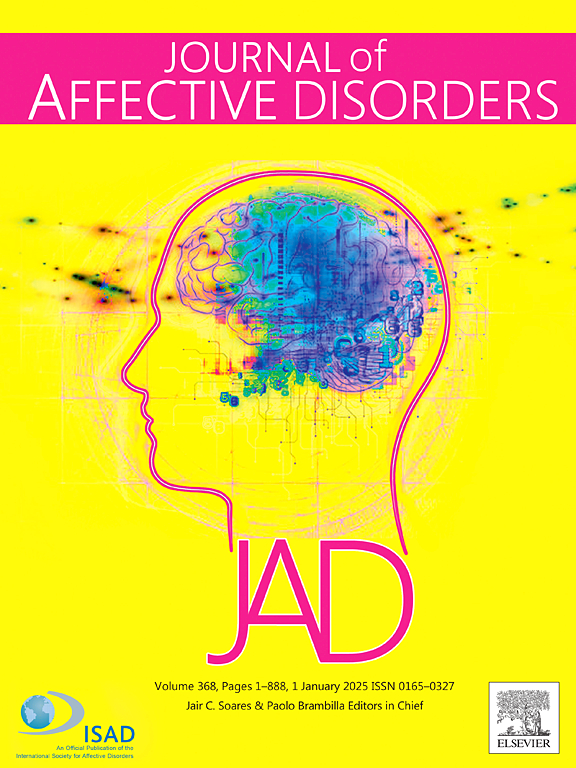The impacts of low back pain and sleep duration on the long-term change in depressive symptoms among middle-aged and older Chinese adults
IF 4.9
2区 医学
Q1 CLINICAL NEUROLOGY
引用次数: 0
Abstract
Background
This study aimed to explore the individual and combined effect of low back pain (LBP) and nighttime sleep duration (NSD) on depressive symptoms (DS), as well as to examine whether these associations were modified by daytime napping.
Methods
Data from 5588 participants in the China Health and Retirement Longitudinal Study (2011–2018) were analyzed. Generalized estimating equation models were fitted to explore the individual and combined effects of baseline LBP and NSD on subsequent DS scores. The Cox proportional hazards regression model was employed to assess the combined effect of LBP and NSD on DS. Subgroup analyses were performed to explore whether these associations differed by daytime napping.
Results
During a mean follow-up of 5.95 years, 2427 participants developed DS. Simultaneous exposure to LBP and short NSD significantly increased DS scores from visit 2 (β = 3.711, 95 % CI = 3.040–4.383) to visit 4 (β = 5.353, 95 % CI = 4.555–6.151), with the fastest increasing rate. The hazard ratio (HR) with 95 % CI for DS incidence was 2.028 (1.721, 2.390) among participants with LBP and short NSD. Subgroup analyses showed that daytime nappers with LBP and long NSD did not significantly increase the DS scores from visit 2 (β = 1.087, P = 0.390) to visit 4 (β = 2.934, P = 0.126).
Conclusions
LBP and short NSD predict higher DS scores and the risk of DS, while daytime napping may reduce the risk of DS among individuals with LBP and long NSD.
腰痛和睡眠时间对中国中老年人抑郁症状长期变化的影响
本研究旨在探讨腰痛(LBP)和夜间睡眠时间(NSD)对抑郁症状(DS)的个体和联合影响,并检查这些关联是否被白天午睡所改变。方法对中国健康与退休纵向研究(2011-2018)5588名参与者的数据进行分析。采用广义估计方程模型来探讨基线LBP和NSD对随后的DS评分的个体和联合影响。采用Cox比例风险回归模型评估LBP和NSD对DS的联合影响。进行亚组分析以探讨这些关联是否因白天午睡而不同。结果在平均5.95年的随访期间,2427名参与者出现退行性痴呆。同时暴露于LBP和短NSD显著提高了第2次随访至第4次随访(β = 3.711, 95% CI = 3.040 ~ 4.383)至第4次随访(β = 5.353, 95% CI = 4.555 ~ 6.151)的DS评分,且上升速度最快。LBP和短NSD患者DS发生率的风险比(HR)和95% CI为2.028(1.721,2.390)。亚组分析显示,从第2次访问(β = 1.087, P = 0.390)到第4次访问(β = 2.934, P = 0.126),伴有LBP和长NSD的白天午睡者的DS评分没有显著提高。结论低bp和短NSD预示着更高的DS评分和DS风险,而白天小睡可降低低bp和长NSD个体的DS风险。
本文章由计算机程序翻译,如有差异,请以英文原文为准。
求助全文
约1分钟内获得全文
求助全文
来源期刊

Journal of affective disorders
医学-精神病学
CiteScore
10.90
自引率
6.10%
发文量
1319
审稿时长
9.3 weeks
期刊介绍:
The Journal of Affective Disorders publishes papers concerned with affective disorders in the widest sense: depression, mania, mood spectrum, emotions and personality, anxiety and stress. It is interdisciplinary and aims to bring together different approaches for a diverse readership. Top quality papers will be accepted dealing with any aspect of affective disorders, including neuroimaging, cognitive neurosciences, genetics, molecular biology, experimental and clinical neurosciences, pharmacology, neuroimmunoendocrinology, intervention and treatment trials.
 求助内容:
求助内容: 应助结果提醒方式:
应助结果提醒方式:


